 Strange ideas from the minds and lenses of mid-century promo photographers. 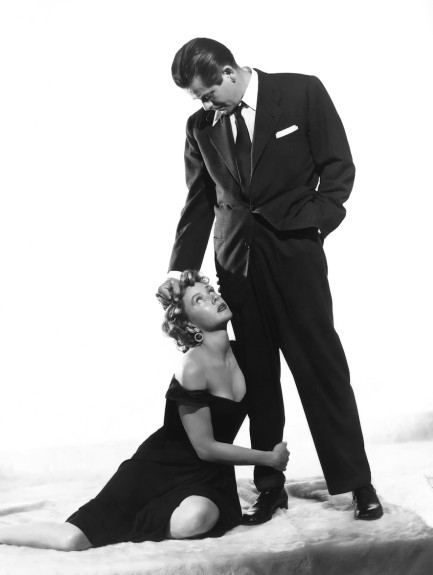 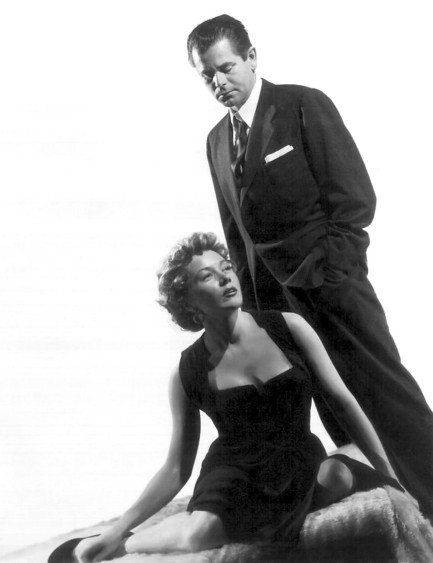 A while back we shared a promo photo of Glenn Ford and Gloria Grahame from 1953's The Big Heat that was meant to imply oral sex (it absolutely was, and you can see for yourself here). We commented on its weirdness, and noted that an actress would probably not be asked or made to pose that way today. The shot got us thinking about whether there were other kneeling promo shots from the mid-century era, and above you see two others from The Big Heat. Below we have more such shots, and while none are as jarring as that previous promo, they're all interesting. We assumed there would be few if any featuring kneeling males, but we found a couple. Even so, there are probably scores more kneeling actresses that we missed. While many of shots took the form they did to highlight the criminal/victim themes in their parent films, you still have to wonder what else—consciously or not—was in the various photograhers' minds. Anyway, just some food for thought this lovely Thursday. Ready, set discuss! 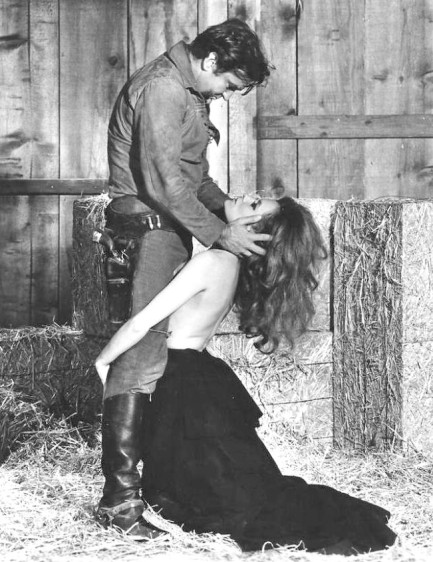 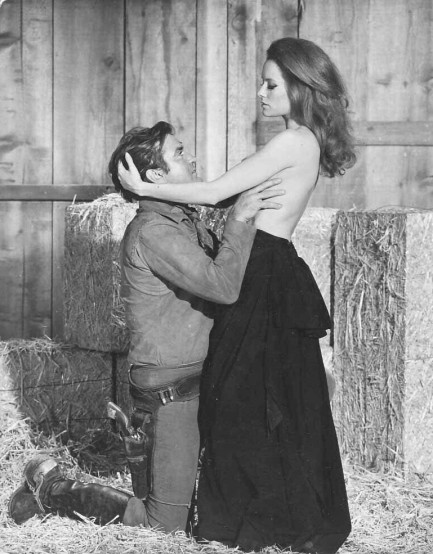 Rod Taylor and Luciana Pauluzzi swap subordinate positions for 1967's Chuka. Rod Taylor and Luciana Pauluzzi swap subordinate positions for 1967's Chuka.
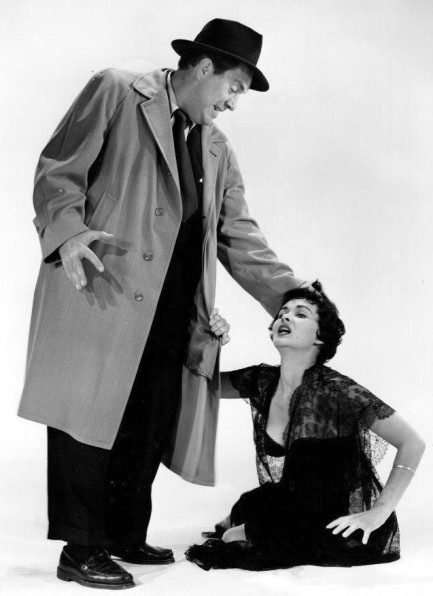 Edmund O'Brien goes for the time honored hair grab on Marla English for 1954's Shield for Murder. Edmund O'Brien goes for the time honored hair grab on Marla English for 1954's Shield for Murder.
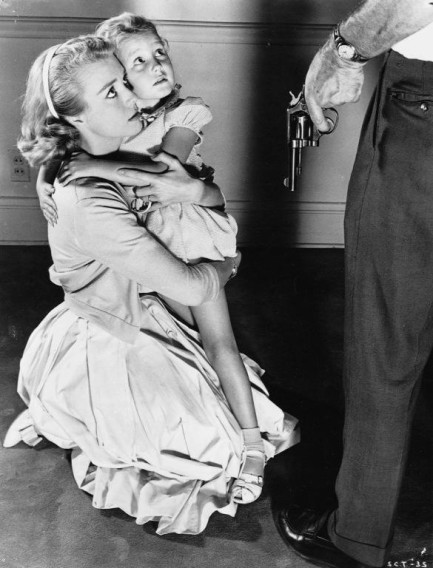 Inger Stevens and Terry Ann Ross for Cry Terror, an adaptation of a novel we talked about a few years ago. Inger Stevens and Terry Ann Ross for Cry Terror, an adaptation of a novel we talked about a few years ago.
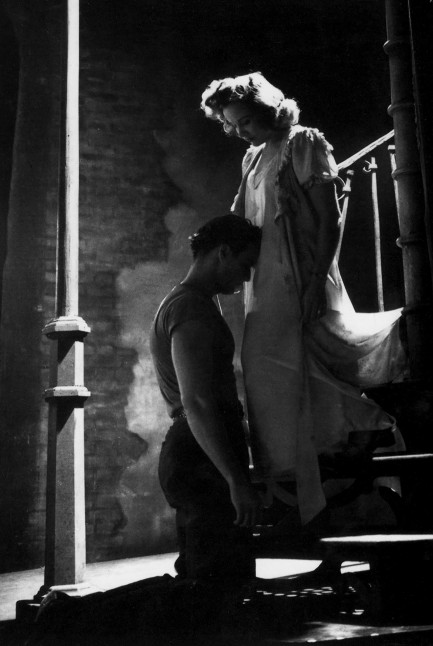 Kim Hunter soothes an overheated Marlon Brando in a promo for 1951's A Streetcar Named Desire. Kim Hunter soothes an overheated Marlon Brando in a promo for 1951's A Streetcar Named Desire.
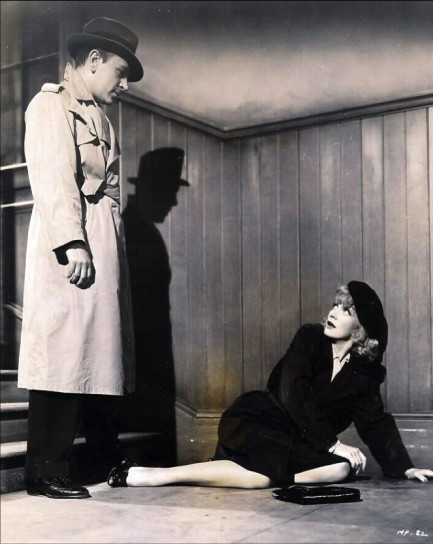 George Raft menaces Marlene Dietrich in the 1941 comedy Manpower. George Raft menaces Marlene Dietrich in the 1941 comedy Manpower.
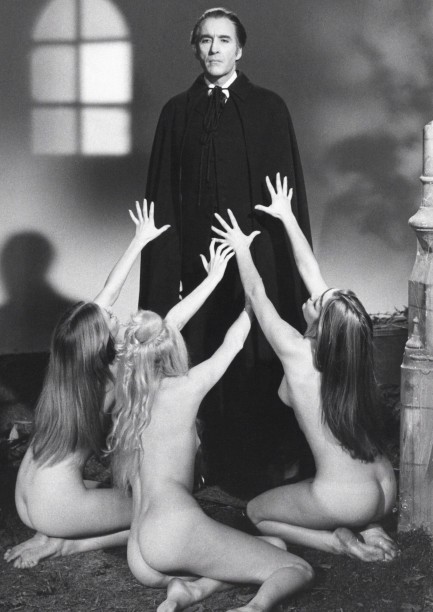 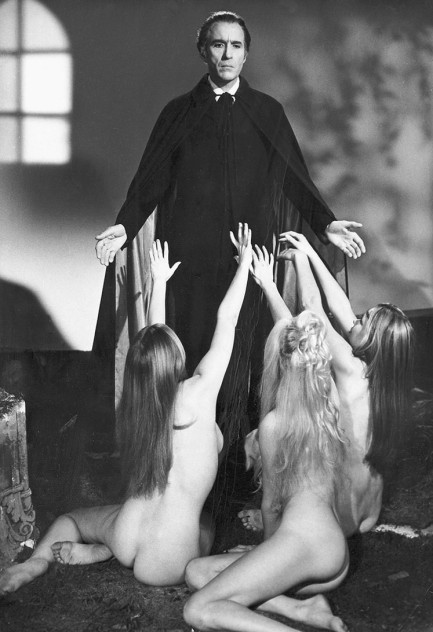 As promos go, these actually make sense. They show three unidentified models mesmerized by vampire Christopher Lee for 1970's Taste the Blood of Dracula. As promos go, these actually make sense. They show three unidentified models mesmerized by vampire Christopher Lee for 1970's Taste the Blood of Dracula.
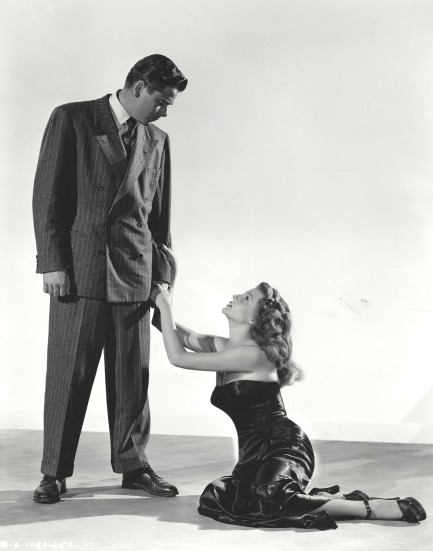 Glenn Ford is at it again, this time looming over Rita Hayworth for the 1946 classic Gilda. Glenn Ford is at it again, this time looming over Rita Hayworth for the 1946 classic Gilda. 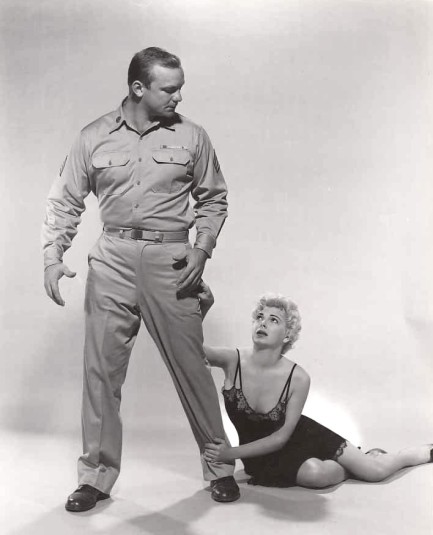 Aldo Ray and Barbara Nichols for 1958's The Naked and the Dead. Aldo Ray and Barbara Nichols for 1958's The Naked and the Dead.
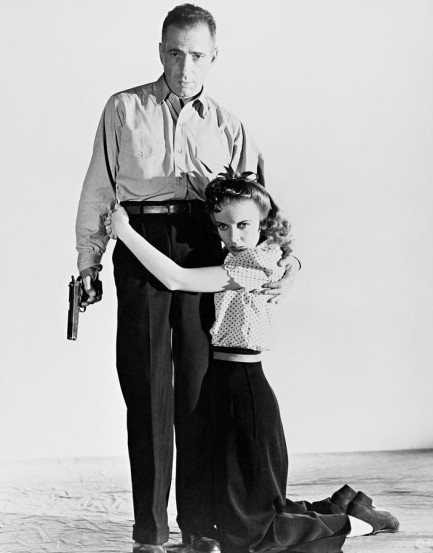 This one shows less domination and more protectiveness, as Humphrey Bogart prepares to defend Ida Lupino for High Sierra, 1941. This one shows less domination and more protectiveness, as Humphrey Bogart prepares to defend Ida Lupino for High Sierra, 1941.
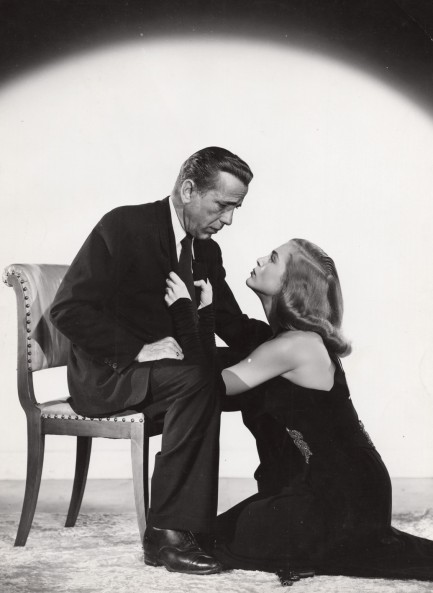 Humphrey once more. Here he's with Lizabeth Scott for Dead Reckoning, 1947. Humphrey once more. Here he's with Lizabeth Scott for Dead Reckoning, 1947.
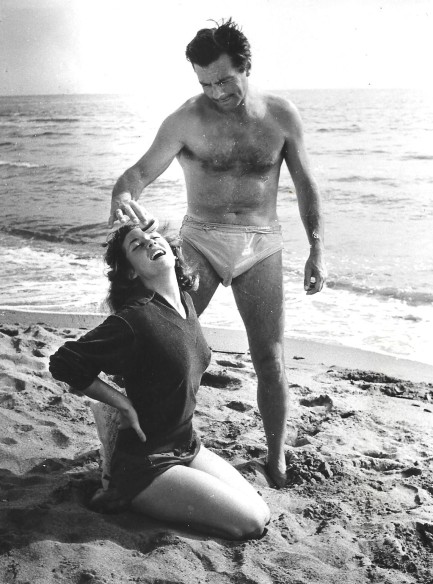 This shot shows Brazilian actress Fiorella Mari with an actor we can't identify in a movie we also can't identify. This shot shows Brazilian actress Fiorella Mari with an actor we can't identify in a movie we also can't identify.
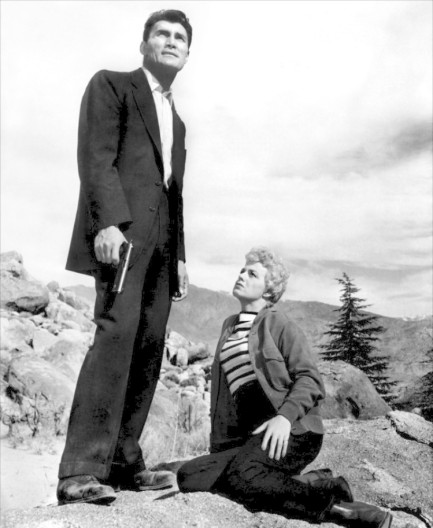 Shelly Winters and Jack Palance climb the highest mountain together for I Died a Thousand Times, 1955. Shelly Winters and Jack Palance climb the highest mountain together for I Died a Thousand Times, 1955.
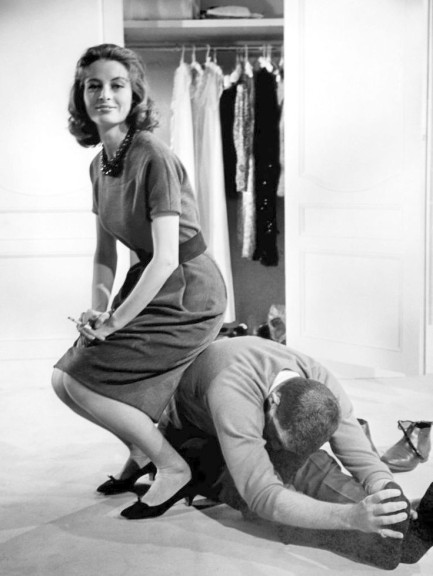 As we said, we didn't find as many examples of kneeling men, but we found this gem—Cappucine makes a seat of director Blake Edwards on the set of The Pink Panther in 1963. Does this count, though? While Edwards is subordinate, he isn't kneeling and it really isn’t a legit promo. As we said, we didn't find as many examples of kneeling men, but we found this gem—Cappucine makes a seat of director Blake Edwards on the set of The Pink Panther in 1963. Does this count, though? While Edwards is subordinate, he isn't kneeling and it really isn’t a legit promo.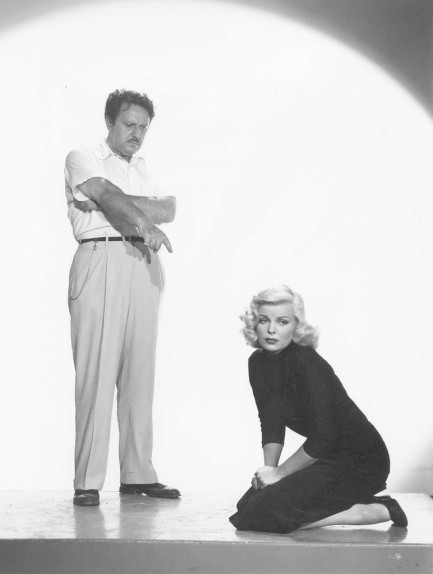 And lastly, in a curious example, Hugo Haas seems to tell Cleo Moore to stay in a shot made for 1953's One Girl's Confession. And lastly, in a curious example, Hugo Haas seems to tell Cleo Moore to stay in a shot made for 1953's One Girl's Confession.
 Liking this film will demand very hard work. 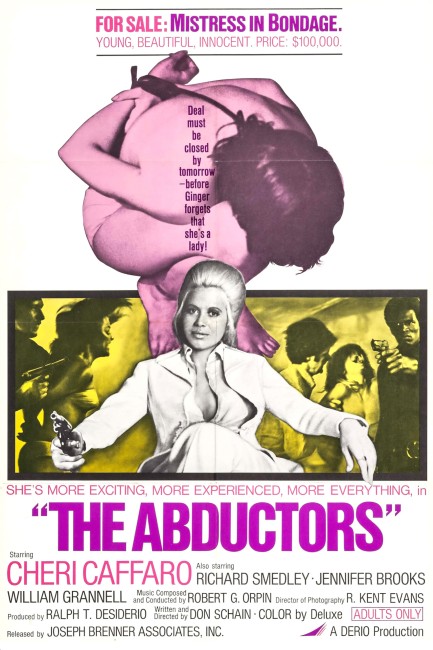
We're back to Cheri Caffaro quicker than you thought, finally taking a look at The Abductors, part of a trilogy of films, along with Ginger and Girls Are for Loving, in which she plays government agent Ginger McAllister. The character, who is no James Bond or Emma Peel (budget alone prevents that), usually lounges around sun-drenched climes, but occasionally is called in by her handler to deal with tough cases. This time she's needed to take down a sex trafficking ring. She recruits her pal Laurie Rose as bait, has her swallow a tracking chip, allows her to be kidnapped, and intends to follow her to the heart of the operation. But the plan doesn't quite work out—cut to Caffaro and Rose bound, gagged, and at the mercy of bad men.
Things look dire at that point. There's not much upside in being tied up in a basement in nothing but your panties. However Caffaro and Rose have two advantages. First, they both know karate or something. And second, they both love sex. They don't even have to fake it. These two can get off even with the flabbiest villains. And if their martial arts and sexual prowess don't bring down the crooks, they have outside help from an entire government funded crimefighting organization. In short—they'll be just fine. The movie is less so. In the end you can say about it exactly what you can say about the other two entries in the Ginger McAllister series: it's bad but interesting; it's surprisingly equal opportunity with its nudity; and it showcases a uniquely brave actress in Caffaro. The Abductors premiered today in 1972.
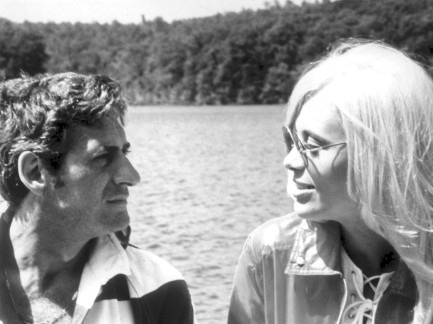 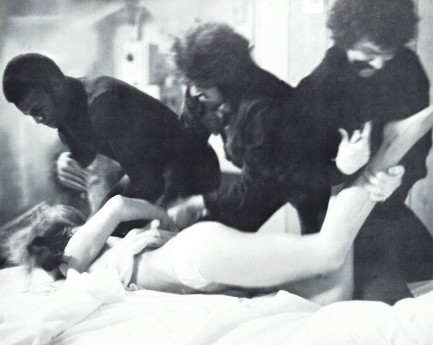 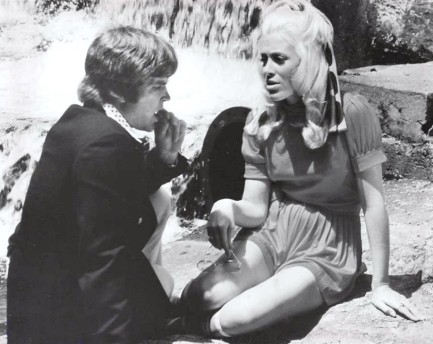  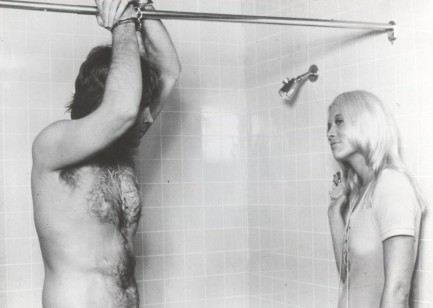 
 Powell shoots for a comedic mystery but doesn't have Hammett's perfect aim. 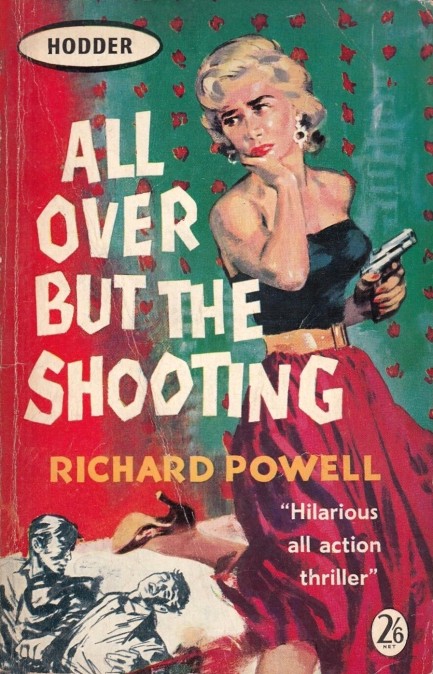
What is a "hilarious all-action thriller" like? That's the question that went through our minds when we impulsively ordered Richard Powell's 1946 novel All Over but the Shooting, though we were also drawn by the cover. The book was originally published by Popular Library, but the striking version you see above with art that's unfortunately uncredited came from the British imprint Hodder & Stoughton in 1952. Powell weaves a tale set in 1942 about Richard Blake and his danger-magnet wife Arabella—Arab for short—who believes she's stumbled across a spy plot centered around a Washington, D.C. women's boarding house. Determined to delve for answers—and to her husband's chagrin—she pretends to be a single woman, takes a room, and starts poking around. Her suspicions are of course correct. The place is a den of Nazis.
Powell thinks outside the box about every aspect of his story: how the conspiracy is uncovered, how the investigation proceeds, what clues are found, and what leaps of intuition keep the intrepid Arabella moving toward a solution. But the entire story is preposterous. Example: when Arab seems likely to be connected to a raincoat she lost while fleeing for her life, her hubby manages to sneak into the room where it's being kept—while its occupant is just upstairs—and have it altered in five minutes by a conveniently situated maid. That way the coat won't fit Arab when the villain tries to say it's hers.
That and about two dozen other moments are silly. Powell achieved, we think, exactly what he set out to do as an author, but we didn't find the book to be exactly scintillating. It was no Thin Man, for example, Dashiell Hammett's smashingly successful amalgam of humor and danger. But in the same way Arab erodes her husband's disbelief and finally gets him to buy into her wacky ideas, she wore us down too. She's a fun character, and makes the book worth a read. We won't seek out Powell again, but one spin around wartime D.C.? Sure, okay.
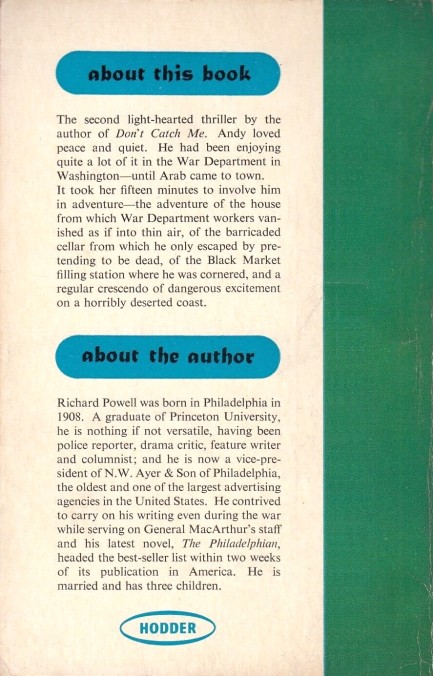
 Possession is nine-tenths of breaking the law. 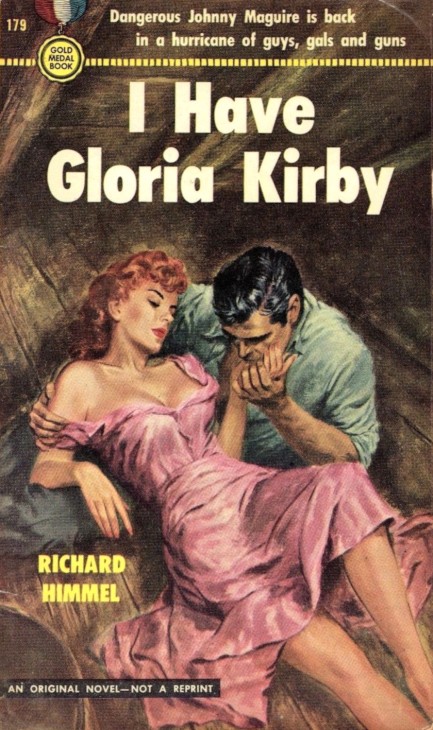
We're back to Richard Himmel today and his franchise character, Chicago tough guy lawyer Johnny Maguire. I Have Gloria Kirby came third in the Maguire series, first appearing as this Gold Medal original edition with uncredited cover art in 1951. As we mentioned before, Maguire is a lawyer, but Himmel basically treats him as a detective, and his narrative follows all the expected forms of private dick novels.
As with the earlier books, there are some good moments here. There's an excellent scene that comes after Maguire and his occasional love Tina, who works in a stenographer's office in Maguire's building, have just narrowly escaped a brutal maiming. Maguire has finished explaining to the confused and terrified Tina why everything has been happening, including why he made her burn a mink coat in the building incinerator a couple of days earlier. It's all about seventy thousand missing dollars:
“Do you know where it is, Johnny?”
“Sure. Sure, I know where it is.”
“Where?”
I dropped my gun on the desk. “You've got it.”
“What did you say?”
“I said you've got it. It's in your office. I put it there myself.”
Tina passed out. She went limp and collapsed to the floor. I let her lie there. She needed the rest. I went into my bottom drawer for the bottle. That bottle had been getting a hell of a workout. Out in the hall I rang for the elevator.
[snip]
When I went back in my office, Tina was sitting up on the floor drinking out of the bottle. “For people that burn mink coats and have seventy thousand dollars lying around, we sure drink cheap liquor,” she said.
That's pretty good. The book isn't at that level all the way through, but it's well written and keeps the tension cranked to high. The final showdown between Maguire and his organized crime nemesis is highly unlikely, but not to the extent that it ruins the tale. As mid-century detective—er, lawyer—novels go, we think I have Gloria Kirby is in the upper half of the distribution.
 Say it with words! Seriously! I very much prefer words! 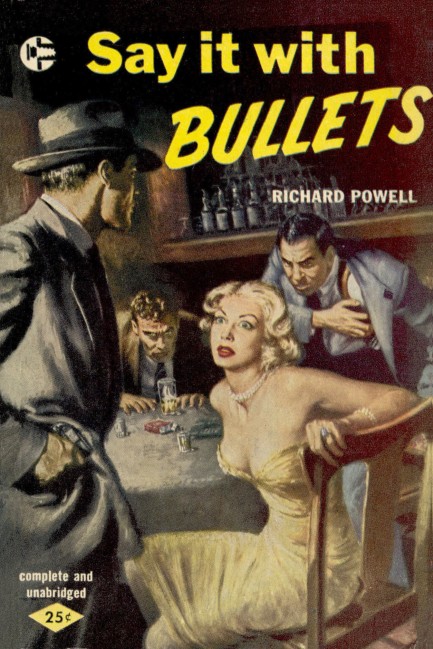
Say It with Bullets was written by Richard Powell and published by Graphic Books in 1954 with great Walter Popp cover art of the instant before all hell breaks loose in a bar. It's the tale of a man named Bill Wayne who, while serving as a pilot in China in World War II, is shot by another pilot, one of five who betray him over half a million dollars in contraband gold. He's left behind but survives, and years later, now in the U.S., has found where each of his almost-killers are residing. He books a spot on a cross-country bus tour called Treasure Trip of the Old West that happens to be passing through those cities, and plans to dispose of his compatriots one by one.
So, obviously, booking a tour that goes through Cheyenne, Salt Lake City, Reno, San Francisco, and Los Angeles, where one's betrayers coincidentally live, is a reach. Actually, let's just call it impossible. But we're believers in accepting the premise of a book, and since Powell explains this set-up in paragraph five we were willing to go with it. Need we say that revenge isn't as clinical as Wayne imagines? It's complicated by a nosy tour director—young and beautiful, of course—an ambitious deputy sheriff, and the growing realization that he's being trailed by a party or parties unknown.
The book is unusual on multiple fronts but the most notable element is that Wayne is one of the biggest wise-asses we've come across in literature. Here's a typical line, delivered after he's taken a beating from the aforementioned sheriff and, dismayingly, run into him the next morning on a street corner: There was Deputy Sheriff Carson Smith, on leave of absence from a dude ranch advertisement. “Hello,” Wayne said. “Did your knuckles recover from that severe bandaging they got here last night?” Wayne is amusing—or tries to be—even in his direst moments. His attitude pushes Say It with Bullets into farce at times, but he also makes an uneven book more interesting than it deserves to be.
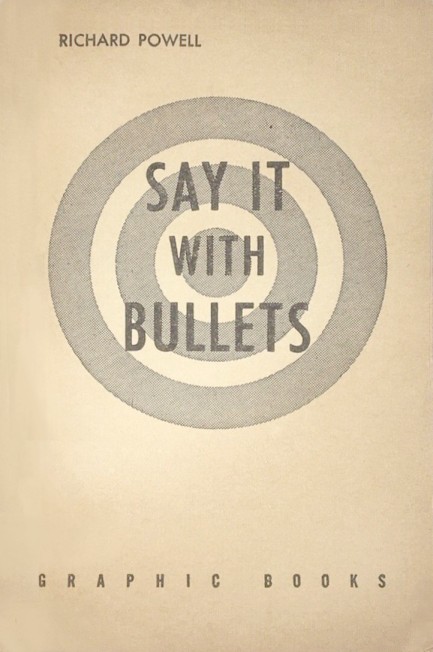 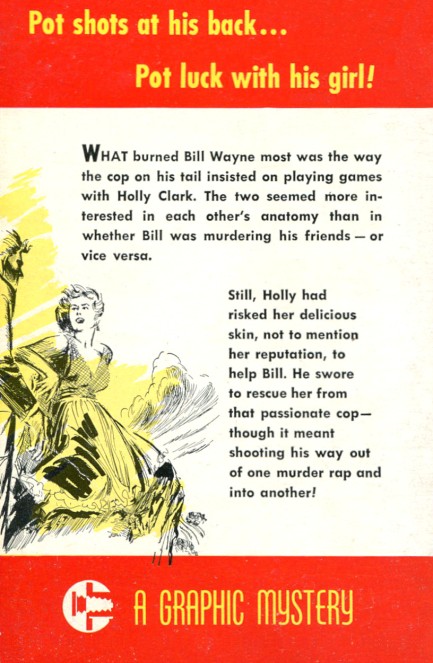
 So long, suckers! There'll never be a star like me again. 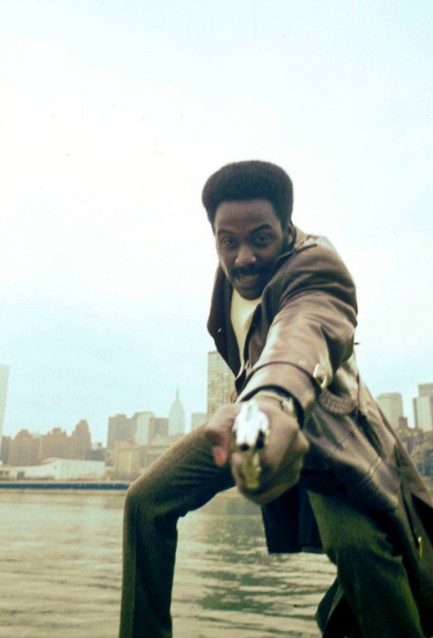
Richard Roundtree, during his long show business career, appeared in scores of movies and television shows, but his first film role was in Shaft and he'll always be known for what can only be described as a cultural awakening, a watershed moment that moved black-centered cinema into the mainstream. It precipitated a flood of capital brought to bear on the genre by investors seeking easy returns, which undermined blaxploitation cinema much same way capital brings a flood of condos to a thriving ethnic neighborhood. Even so Shaft has stood the test of time, is one of the better action movies of the 1970s, generated the sequels Shaft's Big Score and Shaft in Africa, as well as a series of novels, and has remained within the American consciousness thanks to its popular soundtrack, its many lyrical references in hip-hop, and its one-of-a-kind star. Roundtree died today at age eighty-one.
 Chinese communists try to whip Americans in the nuclear race. 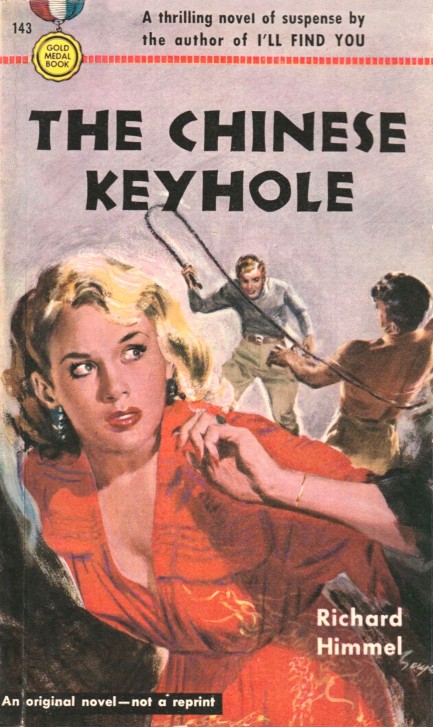
The Chinese Keyhole, Richard Himmel's second novel starring his creation Johnny Maguire, finds the ass kicking lawyer immersed in intrigue in Chicago's Chinatown district, where a mission to deliver a coded message reveals a conspiracy centered in a strip bar. Turns out communists, including a whip wielding psycho, are trying to steal nuclear secrets. Maguire is no longer just a lawyer, but a government agent with his law practice as a front. We don't remember that from the first book, but maybe we missed it.
As in the debut outing Maguire is a guy who takes what he wants, never really asking permission before laying his lips on a nearby woman, and always, of course, he's correct in his assumption that he's sexually desired. Faithful Tina from book one returns to be shabbily treated again, and as before the romantic subplots blossom into full-blown melodrama that would fit perfectly in a Harlequin novel.
We probably don't need to mention that any mid-century book with Asian characters is going to cross some lines, and Maguire doesn't defy expectations on that front, nor does he miss an opportunity to disparage homosexuality. If you haven't read many of these old thrillers you might think that was the norm, but actually it's rare because gay characters don't figure in most of the books. When they did, well, the language got baroque, to say the least. Culturally we've arrived at a better—though still imperfect—place in time.
Flaws aside, we thought The Chinese Keyhole was better written than Himmel's first Maguire novel I'll Find You. Even with this mostly hackneyed commie conspiracy potboiler, he's intrigued us enough to take another ride with his interesting lawyer/lothario/secret agent, so we'll read the third book I Have Gloria Kirby and see where that leaves us. The art on this Gold Medal edition is by Barye Phillips and it dates from 1951.
 He can run from the past but he can't hide. 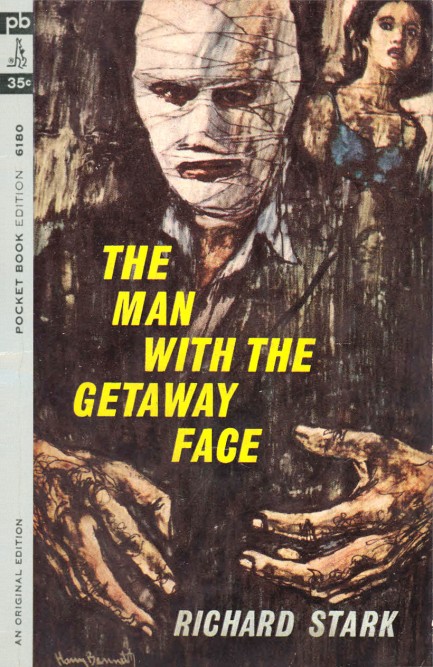 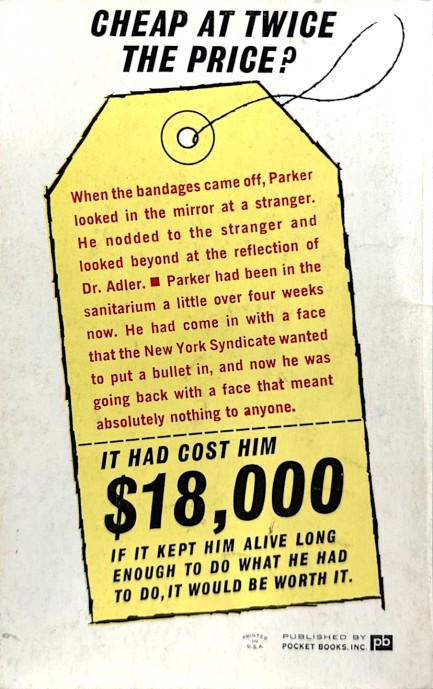
It took us a while but we've returned to Richard Stark, aka Donald E. Westlake, and his Parker series. We read entry one a few years ago. 1963's The Man with the Getaway Face is number two. The cover art here is by Harry Bennett and he basically copied his cover for book one, but changed the background and added the facial bandages. Those bandages reveal the premise—Parker has had a cosmetic surgeon change his face in order to help him evade “the Outfit,” who owe him in spades for various transgressions.
But Getaway Face doesn't focus on Parker's pursuers. Clearly, that's coming in the future. In the here and now he needs money, so he signs onto an armored car robbery, which, in adherence to the pulp law of tenuous connections turning into huge problems, boomerangs in such a way that his face doctor is murdered and Parker is blamed for it. His hands are full: deadly enemies, armed robbery, betrayal, murder, pursuit, and revenge. But he has very big hands. Nice work. We'll read book number three in the series soon.
 Cryin' won't help you, prayin' won't do you no good. 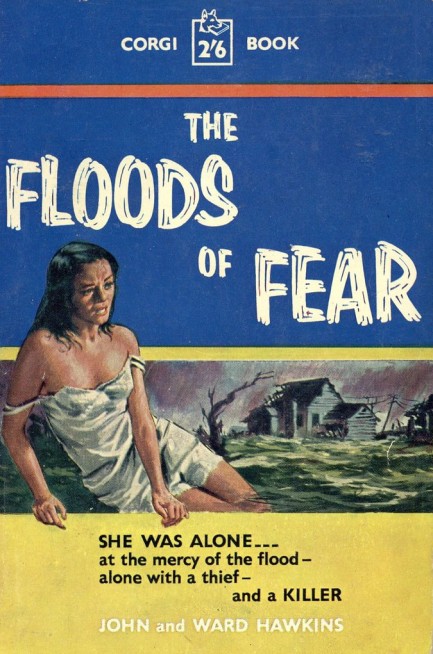
We enjoyed an excellent tale not long ago in John and Ward Hawkins' natural disaster thriller A Man, a River, and a Girl, which was also published as The Floods of Fear by Corgi Books, as you see above. The striking art on this edition is by John Richards. You can read more about the book here.
 It's you and me, baby, ’til death do us part. What's your name again? 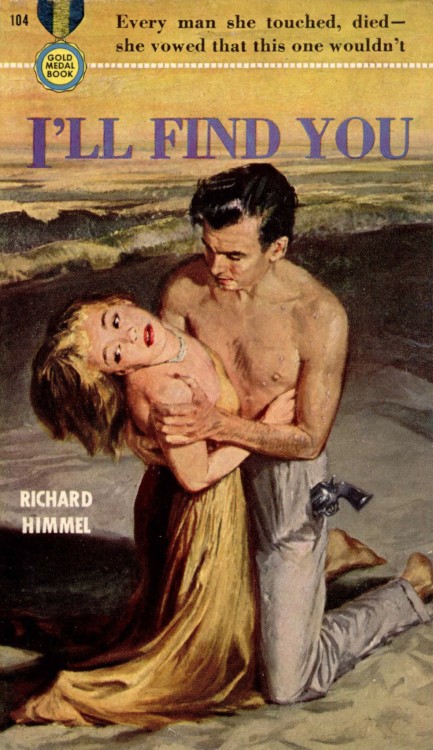
Here's a quick quiz for you. Is the following passage from a crime novel or a romance? There was one truth between us, one truth that would never be untrue. Whatever this animal thing inside me was, there was something inside her that was a mate for it. I felt that nothing could ever change that. It had to be brought alive again. It had to live and burn its own fire and be electric with its own voltage.
Those lines are from Richard Himmel's 1950 thriller I'll Find You, aka It's Murder, Maguire, first in a series of books starring mobbed up Chicago lawyer Johnny Maguire. The passage illustrates something we've noted before—that crime novels and romance novels sometimes intersect. Fictional tough guys occasionally fall head over heels in love, and when they do, the prose describing that love—in some author's hands—can be as overwrought as what you'd find in any romance novel.
In this story, Maguire, who must be one of the dumbest smart characters in crime fiction, falls for a deceased friend's wife who later fakes her own suicide. While the police believe she's dead, he never buys it, and risks his career and safety to locate her. He finds her living under a new identity and refuses to let her get away from him again—which is exactly as stalkerish as it sounds, considering he barely knew her before she vanished. She eventually submits to his overbearing attentions, but sadly, malign actors may ruin their love story.
It's surprising to us that there was a sequel, but Himmel's crime-romance must have struck a nerve with the reading public. It didn't strike one with us, but we didn't dislike it. We felt that it was eye-rollingly saccharine, and we found Himmel's dialogue a bit stilted. On the plus side, Maguire is funny at times, and his friend-with-benefits relationship with a supporting character named Tina has the potential to be engaging, assuming she hangs around. We'll see what develops in book two.

|
 |

The headlines that mattered yesteryear.
1939—Holiday Records Strange Fruit
American blues and jazz singer Billie Holiday records "Strange Fruit", which is considered to be the first civil rights song. It began as a poem written by Abel Meeropol, which he later set to music and performed live with his wife Laura Duncan. The song became a Holiday standard immediately after she recorded it, and it remains one of the most highly regarded pieces of music in American history. 1927—Mae West Sentenced to Jail
American actress and playwright Mae West is sentenced to ten days in jail for obscenity for the content of her play Sex. The trial occurred even though the play had run for a year and had been seen by 325,000 people. However West's considerable popularity, already based on her risque image, only increased due to the controversy. 1971—Manson Sentenced to Death
In the U.S, cult leader Charles Manson is sentenced to death for inciting the murders of Sharon Tate and several other people. Three accomplices, who had actually done the killing, were also sentenced to death, but the state of California abolished capital punishment in 1972 and neither they nor Manson were ever actually executed. 1923—Yankee Stadium Opens
In New York City, Yankee Stadium, home of Major League Baseball's New York Yankees, opens with the Yankees beating their eternal rivals the Boston Red Sox 4 to 1. The stadium, which is nicknamed The House that Ruth Built, sees the Yankees become the most successful franchise in baseball history. It is eventually replaced by a new Yankee Stadium and closes in September 2008.
|

|
|

It's easy. We have an uploader that makes it a snap. Use it to submit your art, text, header, and subhead. Your post can be funny, serious, or anything in between, as long as it's vintage pulp. You'll get a byline and experience the fleeting pride of free authorship. We'll edit your post for typos, but the rest is up to you. Click here to give us your best shot.

|
|




 Rod Taylor and Luciana Pauluzzi swap subordinate positions for 1967's Chuka.
Rod Taylor and Luciana Pauluzzi swap subordinate positions for 1967's Chuka. Edmund O'Brien goes for the time honored hair grab on Marla English for 1954's Shield for Murder.
Edmund O'Brien goes for the time honored hair grab on Marla English for 1954's Shield for Murder.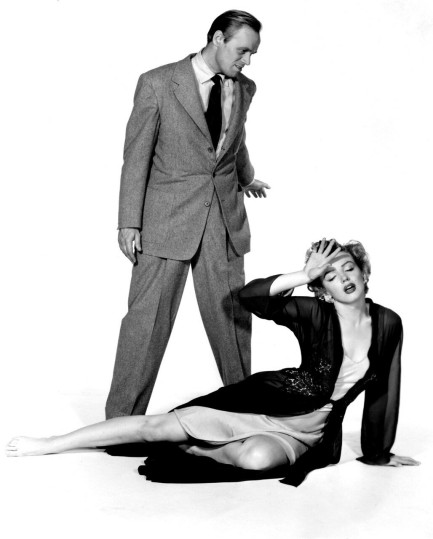 Marilyn Monroe swoons as Richard Widmark snarls for Don't Bother To Knock, 1952.
Marilyn Monroe swoons as Richard Widmark snarls for Don't Bother To Knock, 1952. Inger Stevens and Terry Ann Ross for Cry Terror, an adaptation of a novel we talked about a few years ago.
Inger Stevens and Terry Ann Ross for Cry Terror, an adaptation of a novel we talked about a few years ago. Kim Hunter soothes an overheated Marlon Brando in a promo for 1951's A Streetcar Named Desire.
Kim Hunter soothes an overheated Marlon Brando in a promo for 1951's A Streetcar Named Desire. George Raft menaces Marlene Dietrich in the 1941 comedy Manpower.
George Raft menaces Marlene Dietrich in the 1941 comedy Manpower.
 As promos go, these actually make sense. They show three unidentified models mesmerized by vampire Christopher Lee for 1970's Taste the Blood of Dracula.
As promos go, these actually make sense. They show three unidentified models mesmerized by vampire Christopher Lee for 1970's Taste the Blood of Dracula. Glenn Ford is at it again, this time looming over Rita Hayworth for the 1946 classic Gilda.
Glenn Ford is at it again, this time looming over Rita Hayworth for the 1946 classic Gilda. Aldo Ray and Barbara Nichols for 1958's The Naked and the Dead.
Aldo Ray and Barbara Nichols for 1958's The Naked and the Dead. This one shows less domination and more protectiveness, as Humphrey Bogart prepares to defend Ida Lupino for High Sierra, 1941.
This one shows less domination and more protectiveness, as Humphrey Bogart prepares to defend Ida Lupino for High Sierra, 1941. Humphrey once more. Here he's with Lizabeth Scott for Dead Reckoning, 1947.
Humphrey once more. Here he's with Lizabeth Scott for Dead Reckoning, 1947. This shot shows Brazilian actress Fiorella Mari with an actor we can't identify in a movie we also can't identify.
This shot shows Brazilian actress Fiorella Mari with an actor we can't identify in a movie we also can't identify. Shelly Winters and Jack Palance climb the highest mountain together for I Died a Thousand Times, 1955.
Shelly Winters and Jack Palance climb the highest mountain together for I Died a Thousand Times, 1955. As we said, we didn't find as many examples of kneeling men, but we found this gem—Cappucine makes a seat of director Blake Edwards on the set of The Pink Panther in 1963. Does this count, though? While Edwards is subordinate, he isn't kneeling and it really isn’t a legit promo.
As we said, we didn't find as many examples of kneeling men, but we found this gem—Cappucine makes a seat of director Blake Edwards on the set of The Pink Panther in 1963. Does this count, though? While Edwards is subordinate, he isn't kneeling and it really isn’t a legit promo. And lastly, in a curious example, Hugo Haas seems to tell Cleo Moore to stay in a shot made for 1953's One Girl's Confession.
And lastly, in a curious example, Hugo Haas seems to tell Cleo Moore to stay in a shot made for 1953's One Girl's Confession. 
































































































